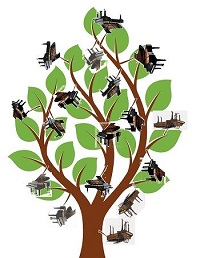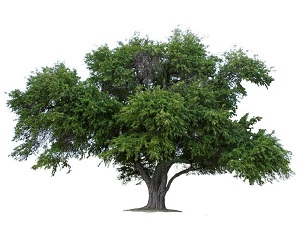Harmony Piano Tuning
The website of Chris Lawson, Piano Tuner & Technician
Serving Greater Geelong & Western Victoria
Pianos & Piano Tuning - Environmental Issues
This is a time when we all need to take stock of our impact on the environment.
 Pianos (and most acoustic music instruments) are generally built to
last, and their environmental impact is relatively low. Pianos also have
a high degree of repair-ability; replacing a broken string or a hammer
shank is a relatively simple matter. If major work is needed (eg new
sets of hammers, or bridge repair work), these repairs should last for
decades (unlike so many electronic gadgets – where if something malfunctions, it is cheaper to throw it out and buy a new one! Shame on
our throw-away society!).
Of course, the cutting down of a certain number of trees is unavoidable
for piano manufacture. The extent to which this impacts the environment
may depend upon whether or not this wood was obtained from sustainable
plantation forests.
Pianos (and most acoustic music instruments) are generally built to
last, and their environmental impact is relatively low. Pianos also have
a high degree of repair-ability; replacing a broken string or a hammer
shank is a relatively simple matter. If major work is needed (eg new
sets of hammers, or bridge repair work), these repairs should last for
decades (unlike so many electronic gadgets – where if something malfunctions, it is cheaper to throw it out and buy a new one! Shame on
our throw-away society!).
Of course, the cutting down of a certain number of trees is unavoidable
for piano manufacture. The extent to which this impacts the environment
may depend upon whether or not this wood was obtained from sustainable
plantation forests.
The main types of
wood used in piano manufacture are Spruce, Rock Maple, Sugar Pine and
Birch. Sometimes wood such as mahogany, and black walnut are used
(mainly for high-grade pianos, such as Steinway). Most of the wood
species used in piano manufacture are abundant, and are sourced from
plantation and renewable sources. The major exception to this is ebony.

EBONY:
Alternatives To Ebony:
There are two main alternatives to ebony:
conventional wood (dyed black), and various plastics and synthetics.
These have proven to be more than acceptable replacements, and are
improving all the time.
IVORY

When it comes to pianos, ivory is, without doubt, the most controversial material – and understandably so.
In the past, elephants were slaughtered to provide ivory for the tops of
white piano keys (ivory was also used for many other products,
such as knife handles) Most nations have now banned trade in ivory
products. Unfortunately, there is still a huge black-market trade in
ivory, sourced by illegal poaching.
Alternatives to Ivory:
Thankfully, piano manufacturers ceased using ivory
on piano keys some decades ago. Today, there is a great range of
synthetic substances used for key tops. These vary in quality and cost
of course; but they are all perfectly adequate; some of them are of very
high quality, and they are all far cheaper than ivory (not that cost
should be the determining factor). For around $30 US, you can obtain a
complete set of very attractive key tops which have a wonderful, pearly
finish.
Legal Ivory
Old, second-hand ivory which pre-dates the prohibitions and bans which now exist around the ivory trade - is still available. Some take the view that as it is available, why not use it. Others (myself included) believe this to be highly questionable.
Where does legal ivory come from?
Probably the most common source of ivory for
piano technicians are keytops from old pianos which pre-date the various
international bans. A well-known German manufacturer recently had one
of their historical pianos renovated using legally obtained ivory.
Other Ivory: Questionable Sources
Ivory
obtained from other sources is much more questionable. Given the widespread
trade in illegal ivory (and a whole host of other poached items, such as
rhino horns, zebra tails, leopard skins, and hippo hide), my own view
is that the safest course of action is to give ivory – of any sort – a
wide berth.
Final Comment:
The above is obviously a very brief discussion of environmental matters – we’ve only touched on a myriad of issues. This is not an environmental website, but I would welcome any additional information about materials in pianos and the relevance concerning environmental impact.



